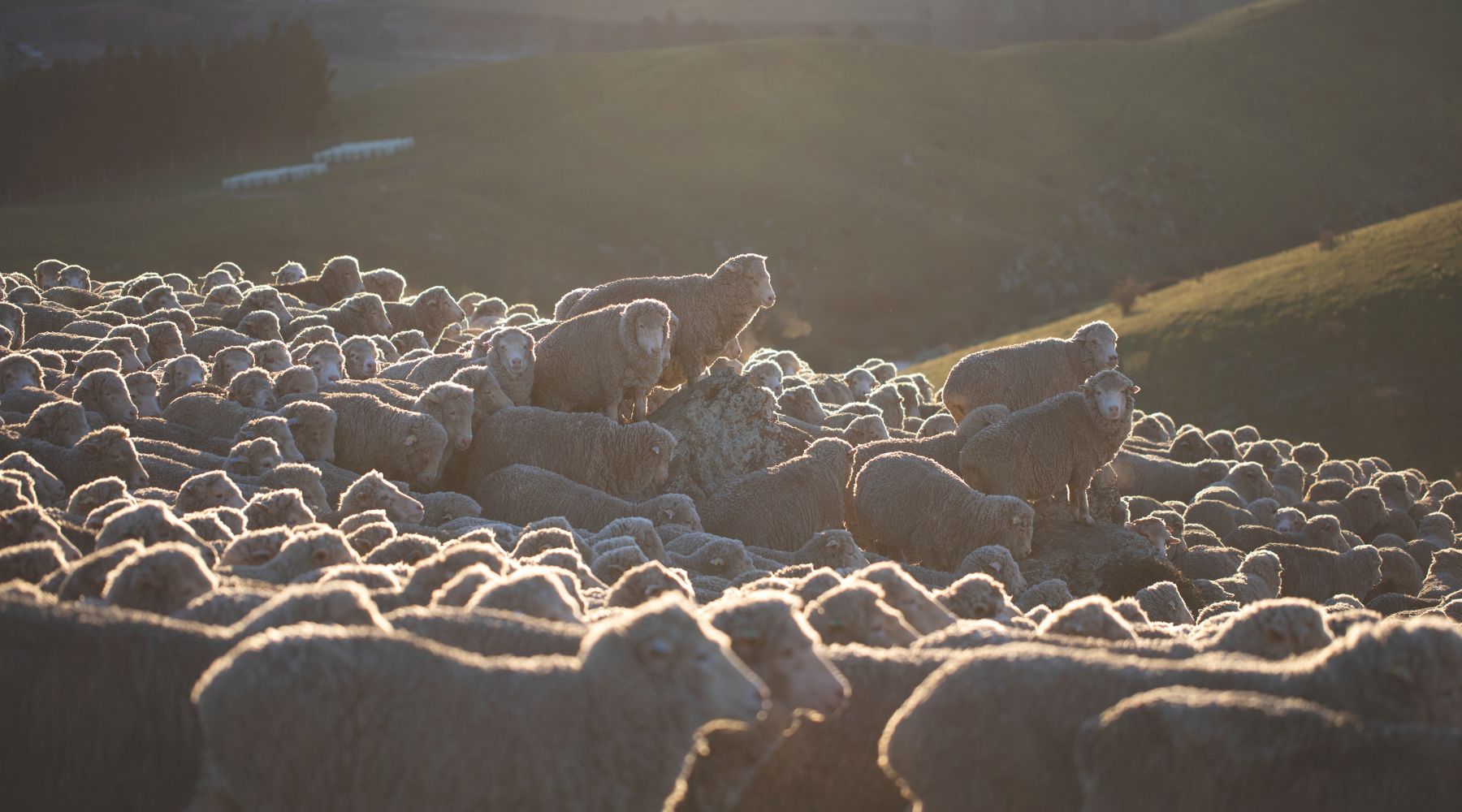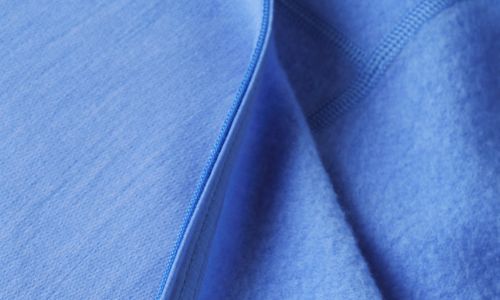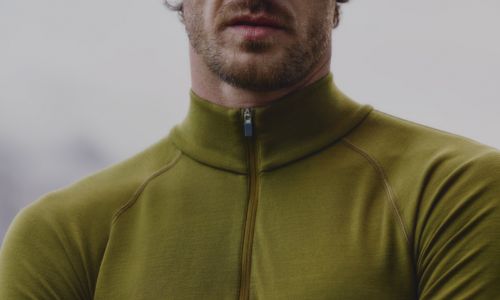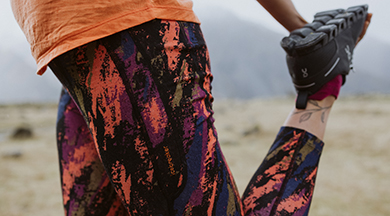Introduction to Merino sheep
05 December 2024
Merino sheep are a wonder of nature. They’ve adapted to survive freezing temperatures and hot summers, primarily thanks to their special thermoregulating wool coat. The Merino breed originated many centuries ago, and they’re now primarily bred in and around the Southern hemisphere - including New Zealand - as they’re perfectly suited to the harsh, changeable climate, and thrive in the rugged brush, bush and mountains of this beautiful natural landscape.
Merino wool is now a firm fixture within the wool industry due to its famous versatility, moisture management and temperature regulation properties, plus unbeatable softness, making it perfect for all-weather clothing and accessories.
In this article, we’ll look at the impressive Merino sheep breed to discover the merino wool origins and its benefits, and answer key questions including: where does merino wool come from originally, where is merino wool from now, and what is so special about this unique fleece?
History and origin of Merino sheep
Merino wool’s origins lie in the 12th century, and they’re now commonly associated with New Zealand who are amongst the world’s leading exporters of this precious wool. Merino sheep were thought to have descended from a wild sheep breed called the Mouflon, and were particularly well suited to warmer climates thanks to their naturally breathable fleece, which helps keep them cool.
Introduced to New Zealand in the 18th century, Merino sheep have played a vital part in New Zealand's agricultural heritage ever since. They’re perfectly adapted to thrive in the unique New Zealand climate, which can fluctuate between searing summers (over 30°C) to freezing winters (-10°C), as their soft, natural fleece adapts to the external conditions to keep them cool in the heat and warm in the cold.
Our history with Merino sheep began in 1995, and icebreaker have continued to celebrate this prized natural material by creating high-performance, temperature-regulating apparel for the whole family to wear all year round. It’s thanks to these impressive sheep that we can harness the power of their soft, naturally odour resistant and resilient natural wool fibres, whilst respecting our growers and animals alike.
Physical characteristics of Merino sheep
The recognisable qualities of the Merino sheep are that they have very soft, fine woolly coats, and generally have white faces, legs and a white fleece. The Merino is a medium sided sheep breed, and, depending on their age and gender, they are generally around 1.4 meters in height and mature adults can weigh between 55 and 100kg.
Merinos have a fascinating, breathable coat which comprises two layers of wool; a thick undercoat, which helps to manage moisture and trap air to keep the sheep cool in the heat and warm in the cold, as well as a coarser outer layer of fleece to protect them and help them stay dry. Merino wool tends to be strong, lightweight, soft to the touch and fairly uniform in both length and colour. It’s the combined benefits of breathability, softness, resilience, thermoregulation and natural odour resistance which makes Merino wool fabric such a sought-after material for making a wide range of clothing.

Where does Merino wool come from?
You may come across Merino sheep living in various countries and continents around the world today, but where does merino wool come from primarily? The merino wool origin story began in the 18th century in New Zealand, and the country is now famous for supplying high quality merino wool all across the world. Today, New Zealand is recognised as the third largest exporter of merino wool globally.
The majority of New Zealand’s merino wool comes from the rugged landscapes of the South Island, where sheep graze the grasses lining snow-capped mountains and drink the fresh water of natural spring-fed natural lakes. Many of icebreaker’s growers are based in this wide open terrain, where sunshine, rain water and fresh air help sheep to thrive, giving them space to exercise, graze and play.
It’s well known that high quality wool comes from healthy and well looked-after sheep, and New Zealand is notable for its ethical and sustainable farming practices, animal welfare laws and workers’ rights. Our growers nurture the high quality wool that goes into all icebreaker clothing, respecting the planet and the supply chain, whilst letting sheep be sheep.
Applications of Merino wool
Merino wool is a highly versatile fleece, thanks to its softness and unbeatable performance in all weather conditions. It is primarily used for:
-
Clothing:
Merino wool can be used to make a wide range of clothing, from base layers to mid layers, t-shirts and tops, dresses and skirts, children’s clothing, activewear and even suits, due to its next-to-skin comfort, breathability and natural ability to adapt to your body temperature and the external climate. It also stays warm when wet, unlike many synthetic fabrics, and is fairly easy to care for.
-
Technical gear:
Its moisture-managing and temperature-regulating features make it ideal for running wear and sportswear, ski clothing and snowsports, hiking clothing, yoga wear, and even outer layers for all-weather apparel. It’s also lightweight, resilient and comfortable to wear, as it doesn’t feel scratchy against your skin like traditional wool can, and it can be layered for maximum performance.
-
Accessories:
Items such as socks, hats and scarves, underwear and gloves benefit from Merino wool's softness and insulating properties. Merino isn’t like traditional wool and is ideal for base layers and high-performance accessories, as it feels light to wear and soft against your skin. It’ll help to keep you warm when you need it, and absorb sweat away from your body and release it into the air to help cool you down.
-
Home textiles:
Merino wool can also be used to create blankets, throws, and bedding, offering warmth, comfort and breathability. Many merino wool items are machine washable, and can simply be air dried to preserve their natural benefits.
Environmental benefits of Merino wool
One of the many benefits of Merino wool is that it’s a natural product which is biodegradable, and has a lower environmental impact than many synthetic materials. Our ethically sourced merino wool clothing is built to last, moving away from fast fashion and focusing on respecting the sheep, every person in our supply chain, and our precious planet. We have a strong emphasis on animal welfare, and all our growers follow our five freedoms of the flock.
At icebreaker, we’re proud to offer 96.14% plastic-free fibres, and 100% of our merino wool can be traced back to the source. We’re proud to offer 10 year supply contracts between us and our growers, and we foster close relationships and get to know all our suppliers by name. We’re also committed to regenerative farming, which respects the land and the environment, and 100% of our wool will be sourced from growers using regenerative practices by 2028.
Merino sheep: Key takeaways
As you can see, the Merino sheep is very special, which is why we value their wool so much. Merino wool is a natural, soft and high performance fibre, which is highly versatile and ideal for creating clothing and accessories for all climates, which is why their prized fleece remains a much sought-after fabric all across the world. It’s thanks to the impressive natural abilities of the hardy Merino sheep, giving icebreaker our precious merino wool for creating natural performance apparel, which has been thousands of years in the making. It’s also why, at icebreaker, we strive to be more merino: strong, soft yet resilient, harnessing the power of nature to help us reach our peak performance every day, come rain or shine.
Now you know more about the amazing Merino sheep, and everything their wool can offer us, browse icebreaker’s latest clothing collections today.
FAQs
What is special about Merino sheep?
Merino sheep are famous for their soft and versatile wool which helps to manage moisture and regulate temperature. Their breathable fleece can adapt to extreme climates, making their fine wool perfect for activewear, base layers and high performance sports apparel. Their lightweight fleece is also resilient, provides natural odour resistance and is supremely soft against the skin, unlike the scratchy feeling that traditional wool can have.
How much does one Merino sheep cost?
The price of a single Merino sheep will vary, depending on their country of origin and how they’ve been brought up. Merino wool is considered a luxury item, thanks to its fine fibres, softness and ability to regulate temperature, which is why Merino sheep are generally more expensive to buy than many other sheep breeds.
Which country produces the best merino wool?
If you’re wondering where is merino wool from, and which produces the best quality, many consumers would say New Zealand. New Zealand is famous for producing high quality merino wool because the harsh weather conditions are perfect for creating soft, resilient natural wool fibres which help keep you warm in winter and cool in the summer. New Zealand also offers regenerative farming techniques and has stringent animal welfare rules, as healthy, happy sheep are also known to provide quality fleece.
What does the name Merino mean?
The name Merino is thought to be inspired from Medieval Latin, combining the word ‘maiorinus’, meaning steward or head of a village, and ‘maior’ which means great or greater. The Spanish surname today can be heard across the world, and the Merino sheep is thought to have been named as such to show how precious and important their wool is within the textile industry, from centuries ago through to now.
More for you

What is merino wool
10 December 2024 | icebreaker

Merino wool fabric
08 November 2024 | icebreaker

How to wash merino wool?
10 October 2024 | icebreaker
More for you










